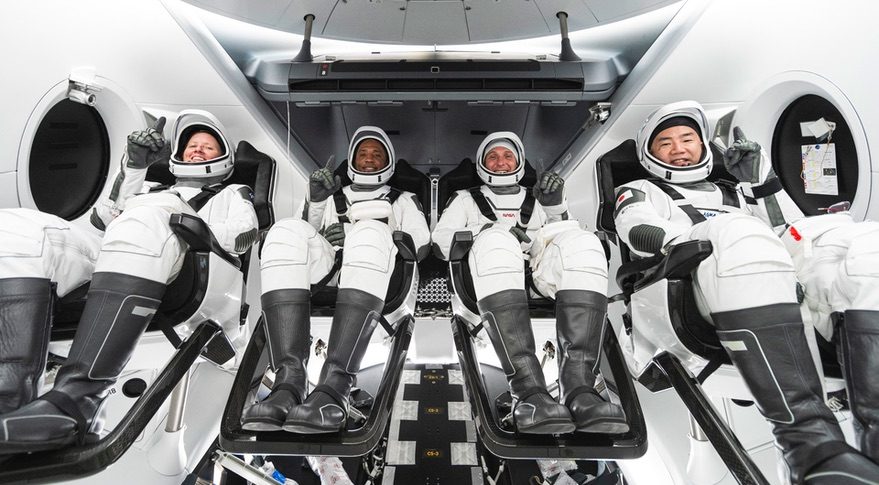
WASHINGTON — NASA announced Aug. 14 that the first operational SpaceX commercial crew mission to the International Space Station will launch in late October, a delay to accommodate other spacecraft flying to the station.
The agency said it has set a date of no earlier than Oct. 23 for the Crew-1 launch, which will send three NASA astronauts and one astronaut from the Japanese space agency JAXA on a Crew Dragon spacecraft to the ISS for a six-month mission. NASA previously said the mission would launch in late September, but officials had hinted in recent days that the launch could be delayed until October.
“Right now it’s scheduled for late September. It could slip into October,” NASA Administrator Jim Bridenstine said Aug. 7 in a keynote speech at an online conference for alumni of the International Space University.
Just before the launch of the Demo-2 mission May 30, NASA said it was targeting a launch date of no earlier than Aug. 30 for Crew-1, assuming that Demo-2 returned by the beginning of August. However, in the weeks before the Demo-2 splashdown Aug. 2, NASA said they required at least six weeks to complete certification work on the spacecraft before launching Crew-1, pushing that launch back to the latter part of September.
The new delay, NASA said in its announcement of the Crew-1 launch date, is primarily because of other visiting vehicle traffic at the ISS. The Soyuz MS-17 spacecraft is scheduled to launch to the station Oct. 14, transporting NASA astronaut Kate Rubins and Roscosmos cosmonauts Sergey Ryzhikov and Sergey Kud-Sverchkov to the station. They will replace the current crew of NASA’s Chris Cassidy and Roscosmos’ Anatoly Ivanishin and Ivan Vagner, who are scheduled to return to Earth on the Soyuz MS-16 spacecraft several days after the arrival of Soyuz MS-17.
In addition to the Soyuz arrivals and departures, a Cygnus cargo spacecraft is currently scheduled for launch Sept. 29 on an Antares rocket from Wallops Island, Virginia. Cygnus spacecraft typically arrive at the station two to three days after launch.
Crew-1 will transport to the station NASA astronauts Michael Hopkins, Victor Glover and mission specialist Shannon Walker, and JAXA astronaut Soichi Noguchi. “We’re ready to go to the space station,” Glover said at a press conference after the Demo-2 splashdown Aug. 2. “We’re very close to ready to fly the Dragon into low Earth orbit.”
The late October launch of Crew-1, NASA said, will allow them to remain on the station through the launch this spring of Crew-1, which will transport a new crew of astronauts from NASA, JAXA and the European Space Agency to the station. While the Crew-1 mission will use a new Falcon 9 booster and Crew Dragon spacecraft, Crew-2 will use the Dragon capsule from the Demo-2 mission and the Falcon 9 booster from Crew-1.
NASA still has to complete certification of the Crew Dragon spacecraft to allow the Crew-1 mission to proceed. At the post-splashdown press conference, Steve Stich, manager of NASA’s commercial crew program, said he expected the final certification review to take place in late August or early September.








 个人中心
个人中心 我的培训班
我的培训班 反馈
反馈












Comments
Something to say?
Log in or Sign up for free